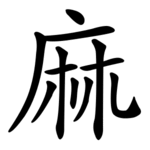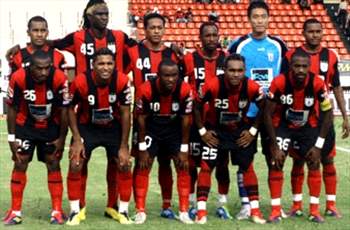See also: War on Drugs, Legal history of cannabis in the United States, and History of medical cannabis

The Chinese character for hemp (麻 or má) depicts two plants under a shelter.[105] Cannabis cultivation dates back at least 10,000 years in Taiwan.[106]
Cannabis is also known to have been used by the ancient Hindus of India and Nepal thousands of years ago. The herb was called ganjika in Sanskrit (गांजा,ganja in modern Indo-Aryan languages).[113][114] The ancient drug soma, mentioned in the Vedas, was sometimes associated with cannabis.[115]
Cannabis was also known to the ancient Assyrians, who discovered its psychoactive properties through the Aryans.[116] Using it in some religious ceremonies, they called it qunubu (meaning "way to produce smoke"), a probable origin of the modern word "cannabis".[117] Cannabis was also introduced by the Aryans to the Scythians, Thracians and Dacians, whose shamans (the kapnobatai—"those who walk on smoke/clouds") burned cannabis flowers to induce a state of trance.[118]

Cannabis sativa from Vienna Dioscurides, 512 AD
A study published in the South African Journal of Science showed that "pipes dug up from the garden of Shakespeare's home in Stratford-upon-Avon contain traces of cannabis."[123] The chemical analysis was carried out after researchers hypothesized that the "noted weed" mentioned in Sonnet 76 and the "journey in my head" from Sonnet 27 could be references to cannabis and the use thereof.[124] Examples of classic literature featuring cannabis include Les paradis artificiels by Charles Baudelaire and The Hasheesh Eater by Fitz Hugh Ludlow.
John Gregory Bourke described use of "mariguan", which he identifies as Cannabis indica or Indian hemp, by Mexican residents of the Rio Grande region of Texas in 1894. He described its uses for treatment of asthma, to expedite delivery, to keep away witches, and as a love-philtre. He also wrote that many Mexicans added the herb to their cigarritos or mescal, often taking a bite of sugar afterward to intensify the effect. Bourke wrote that because it was often used in a mixture with toloachi (which he inaccurately describes as Datura stramonium), mariguan was one of several plants known as "loco weed". Bourke compared mariguan to hasheesh, which he called "one of the greatest curses of the East", citing reports that users "become maniacs and are apt to commit all sorts of acts of violence and murder", causing degeneration of the body and an idiotic appearance, and mentioned laws against sale of hasheesh "in most Eastern countries".[125][126][127]
Cannabis was criminalized in various countries beginning in the early 20th century. In the United States, the first restrictions for sale of cannabis came in 1906 (in District of Columbia).[128] It was outlawed in South Africa in 1911, in Jamaica (then a British colony) in 1913, and in the United Kingdom and New Zealand in the 1920s.[129] Canada criminalized cannabis in the Opium and Drug Act of 1923, before any reports of use of the drug in Canada. In 1925 a compromise was made at an international conference in The Hague about the International Opium Convention that banned exportation of "Indian hemp" to countries that had prohibited its use, and requiring importing countries to issue certificates approving the importation and stating that the shipment was required "exclusively for medical or scientific purposes". It also required parties to "exercise an effective control of such a nature as to prevent the illicit international traffic in Indian hemp and especially in the resin".[130][131]
In the United States in 1937, the Marihuana Tax Act was passed, and prohibited the production of hemp in addition to cannabis. The reasons that hemp was also included in this law are disputed—several scholars have claimed that the act was passed in order to destroy the US hemp industry,[132][133][134] with the primary involvement of businessmen Andrew Mellon, Randolph Hearst, and the Du Pont family.[132][134] But the improvements of the decorticators, machines that separate the fibers from the hemp stem, could not make hemp fiber a very cheap substitute for fibers from other sources because it could not change that basic fact that strong fibers are only found in the bast, the outer part of the stem. Only about 1/3 of the stem are long and strong fibers.[132][135][136][137]
The United Nations' 2012 Global Drug Report stated that cannabis "was the world's most widely produced, trafficked, and consumed drug in the world in 2010", identifying that between 119 million and 224 million users existed in the world's adult (18 or older) population.[138]
REFRENSI :WIKIPEDIA

